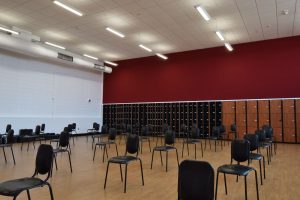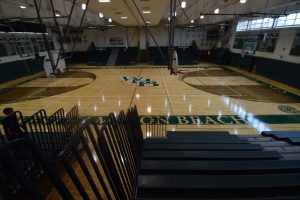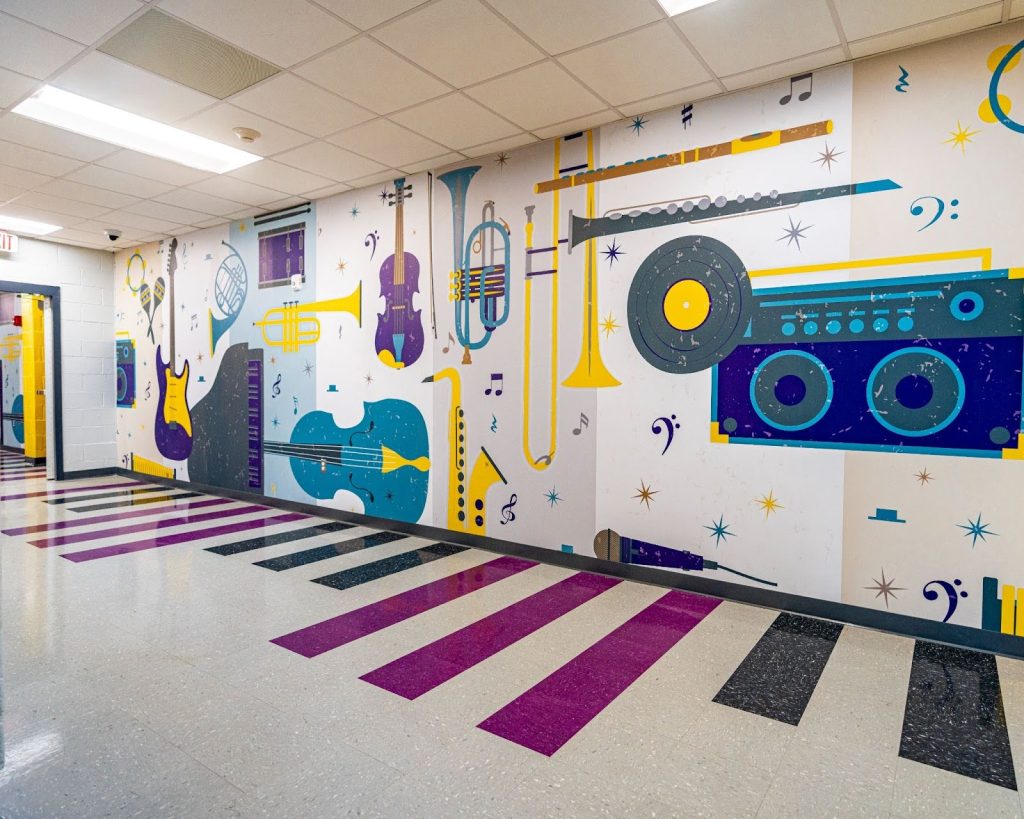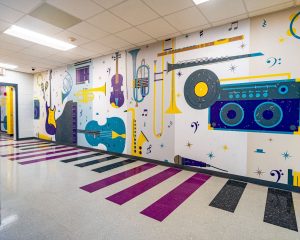In educational environments, acoustics play a critical role in student learning and overall comfort. Poor acoustics can lead to distractions, reduced comprehension, and increased stress levels for both students and teachers. One often-overlooked factor in school acoustics is flooring.
Understanding how different flooring materials affect sound can help school administrators and facility managers make better flooring decisions to create quieter, more conducive learning spaces.
How Flooring Impacts Acoustics in Schools
Impact on Sound Absorption
Hard Flooring Surfaces: Materials like hardwood, tile, and polished concrete tend to reflect sound waves, which can increase noise levels and echo in hallways, gyms, and classrooms. While these materials are durable and easy to maintain, their acoustic properties may negatively impact the learning environment unless paired with sound-absorbing elements.
Soft Flooring Surfaces Carpet and rubber flooring absorb sound, reducing echo and footstep noise. These materials help create quieter spaces, especially in high-traffic areas like hallways, libraries, and classrooms, improving concentration and reducing distractions.
Footfall Noise
Direct Transmission: Hard floors can transmit impact noise (footsteps, dropped objects) to the room below if installed without a proper underlayment.
Mitigation: Acoustic underlayments or padding can be installed beneath hard flooring (like LVT or hardwood) to dampen impact noise, which is crucial in multi-story schools.
Speech Intelligibility
Excessive reverberation from reflective flooring can make it harder for students to understand teachers, especially for students with hearing impairments.
Using flooring with sound-absorbing qualities or combining it with wall panels, ceilings, or furniture that dampen sound improves clarity.
Noise in Common Areas
Gymnasiums, cafeterias, and corridors often experience high noise levels. Flooring choices like cushioned vinyl or rubber can significantly reduce the “roar” of these spaces.
Hallways with hard flooring may require additional acoustic measures (like acoustic ceilings or wall panels) to control noise.
Long-Term Maintenance and Acoustic Consistency
Over time, flooring that becomes worn or uneven can create squeaks or uneven sound reflections, subtly affecting acoustic quality. High-quality installation and materials help maintain consistent sound performance.
In schools, flooring isn’t just aesthetic or durable, it directly influences how sound behaves. Selecting the right type of floor (and using underlayment or acoustic solutions when installing hard surfaces) can reduce noise, enhance learning, and make spaces more comfortable for everyone.
Beyond flooring, there are additional ways to improve sound control throughout a school. Acoustic wall panels, ceiling treatments, baffles, and even thoughtful placement of furnishings can dramatically reduce unwanted noise and create a more comfortable learning environment. RENU Contracting & Restoration specializes in these broader facility enhancements—whether it’s installing acoustic ceiling tiles, adding wall treatments, or integrating noise-dampening features into larger renovations, helping your school achieve a cohesive, acoustically balanced space.
Milburn Flooring Will Optimize School Acoustics with Smart Flooring Choices
At Milburn Flooring, we understand the unique challenges schools face with acoustics and durability. Our team can recommend and install flooring solutions that balance sound control with longevity and maintenance needs.
Contact us today to discuss flooring and acoustics in schools and schedule your consultation!




